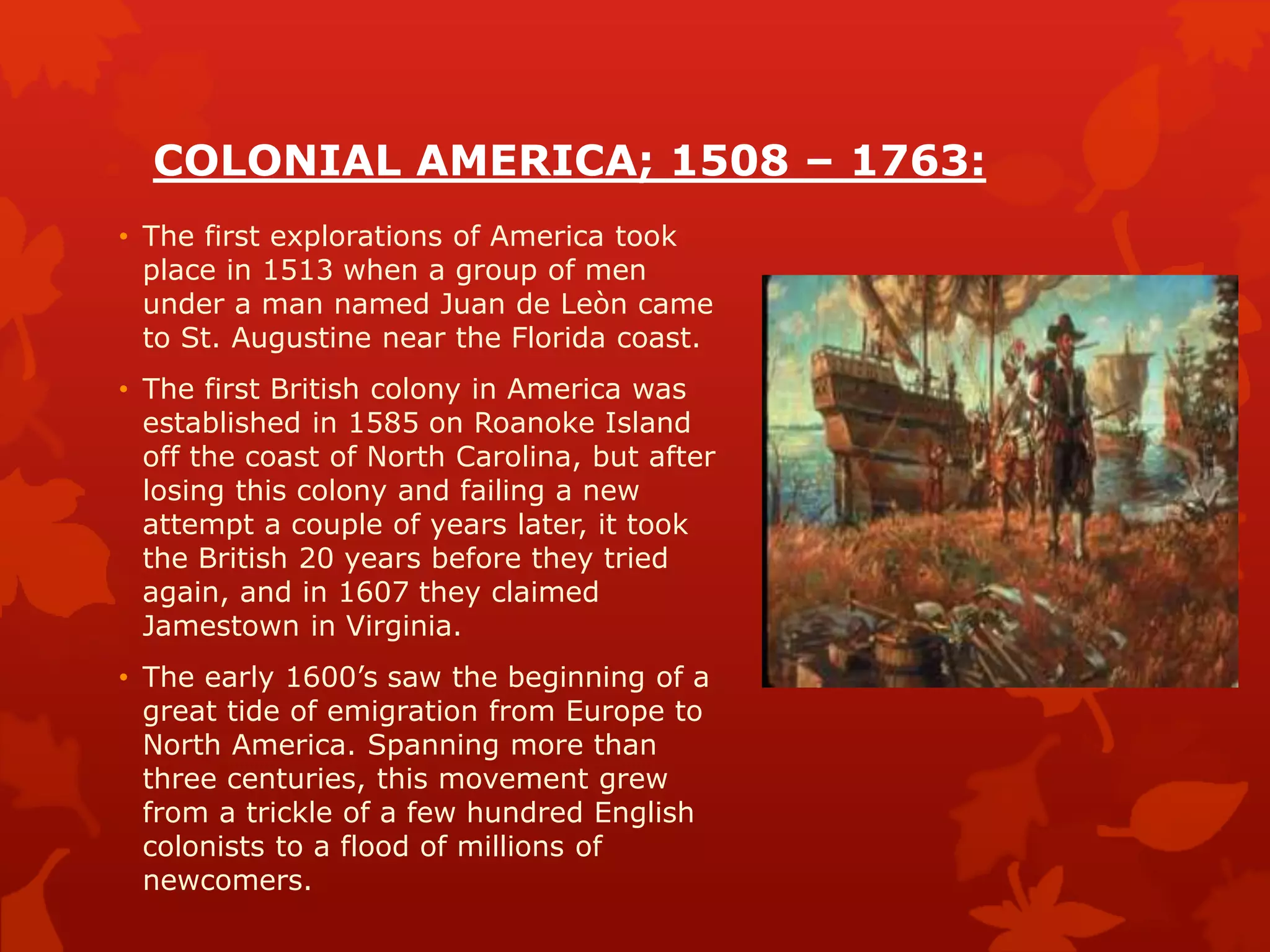The document outlines key events in American history from prehistoric times to 1900, starting with the arrival of Native Americans and subsequent European colonization. It covers topics such as the establishment of colonies, the American Revolution, the Civil War, and the socioeconomic disparities during the Gilded Age, highlighting the impact of immigration and industrialization. Significant milestones include the formation of the United States, the abolition of slavery, and America's emergence as a global economic power by 1900.














